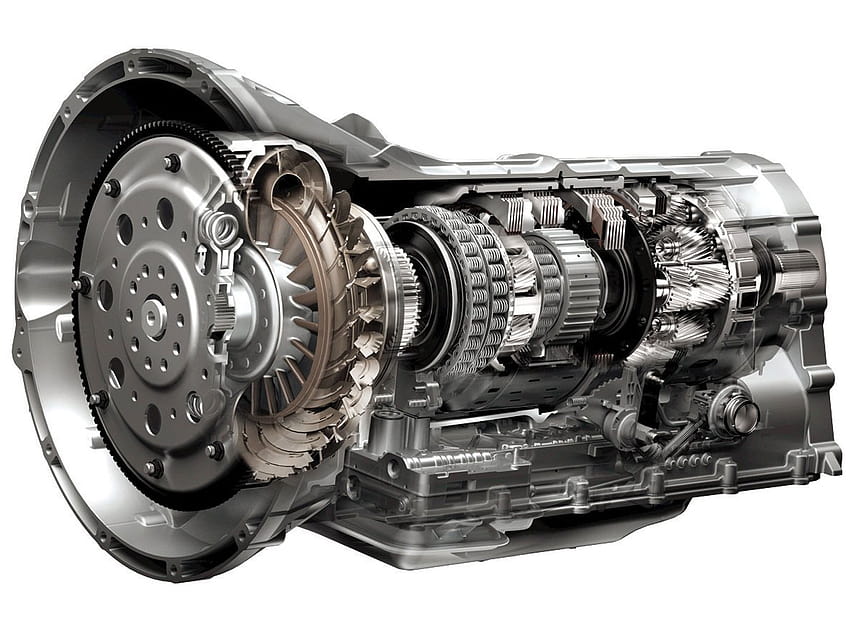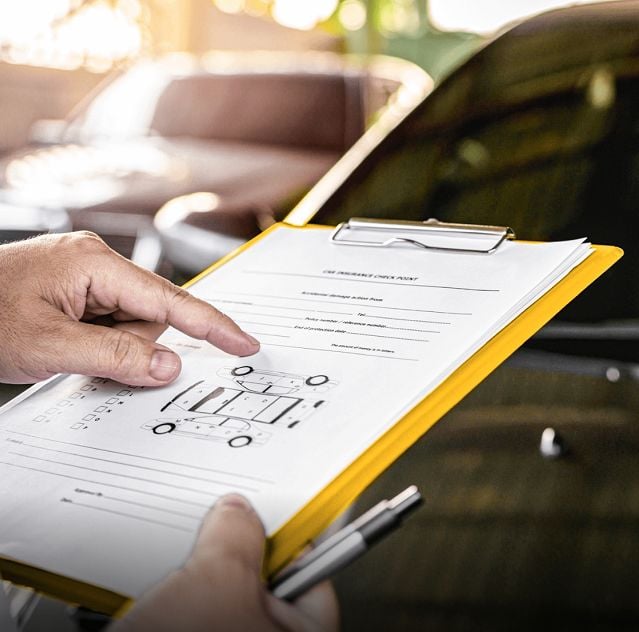

Manual Gearbox vs Automatic: Unraveling the Advantages of DSG, CVT, F1, SMG, and Sequential Systems
This article discusses the pros and cons of manual and automatic gearboxes, including factors such as control, fuel efficiency, maintenance costs, and personal preference. It also highlights specific types of automatic gearboxes such as DSG, CVT, and F1 systems, emphasizing their advantages in terms of seamless gear changes, fuel efficiency, and performance. The article also explores the benefits of manual gearboxes for driving enthusiasts, including control, personalization, and fuel efficiency. Additionally, it discusses automated manual transmissions like SMG and sequential gearboxes, which offer a balance between convenience and control. Ultimately, the choice between manual and automatic gearboxes depends on individual preferences, driving style, and the intended use of the vehicle.
Are you in the market for a new car and unsure whether to choose a manual gearbox or an automatic gearbox? The decision between these two options can be a difficult one, as both have their own set of advantages and disadvantages. In this article, we will dive into the pros and cons of manual and automatic gearboxes, as well as explore the various types of automatic gearboxes available, such as DSG, CVT, and F1 systems. We will also take a closer look at the thrill of driving a car with a manual gearbox and the benefits of a traditional transmission. Additionally, we will navigate the world of automated manual transmissions, including SMG and sequential gearboxes. Furthermore, we will compare the efficiency and performance of manual and automatic gearboxes, with a focus on the Gertag system. Finally, we will provide guidance on how to choose the perfect gearbox for your driving needs. Whether you are a car enthusiast seeking the ultimate driving experience or simply looking for a convenient and efficient mode of transportation, this article will help you make an informed decision.
- 1. Understanding the Pros and Cons of Manual Gearbox and Automatic Gearbox
- 2. Unveiling the Advantages of Automatic Gearboxes: DSG, CVT, and F1 Systems
- 3. The Thrill of Manual Gearbox: Exploring the Benefits of a Traditional Transmission
- 4. Navigating the World of Automated Manual Transmissions: SMG and Sequential Gearboxes
- 5. Gertag vs. Automatic Gearbox: A Comprehensive Comparison of Efficiency and Performance
- 6. Finding the Perfect Match: Choosing Between Manual and Automatic Gearbox for Your Driving Needs
1. Understanding the Pros and Cons of Manual Gearbox and Automatic Gearbox
Understanding the Pros and Cons of Manual Gearbox and Automatic Gearbox
When it comes to choosing between a manual gearbox and an automatic gearbox, there are several factors to consider. Both options have their own set of advantages and disadvantages, which can greatly impact the driving experience. Let’s take a closer look at the pros and cons of each type of gearbox.
1. Manual Gearbox:
A manual gearbox, also known as a manual transmission, requires the driver to manually shift gears using a clutch pedal and gear stick. Here are the pros and cons of opting for a manual gearbox:
Pros:
– Control: With a manual gearbox, the driver has complete control over gear changes, allowing for a more engaging and connected driving experience.
– Fuel Efficiency: Manual gearboxes are generally more fuel-efficient, as they provide better control over gear ratios, allowing the driver to optimize fuel consumption.
– Lower Maintenance Costs: Manual gearboxes are often less complex and have fewer components, resulting in lower maintenance costs compared to automatic gearboxes.
– Cost-effective: Vehicles with manual gearboxes are usually cheaper to purchase and repair, making them a more affordable option for budget-conscious drivers.
Cons:
– Learning Curve: Shifting gears manually requires some practice and can be a bit challenging for new drivers. It may take time to master the coordination between the clutch, gear stick, and accelerator.
– Traffic Jams: In heavy traffic or stop-and-go situations, the constant clutch engagement/disengagement can become tiring and inconvenient.
– Less Convenience: Manual gearboxes require more effort and attention from the driver, which can be less convenient, especially in urban areas or during long drives.
2. Automatic Gearbox:
An automatic gearbox, as the name suggests, automatically changes gears without any manual intervention. Let’s explore the pros and cons of an automatic gearbox:
Pros:
– Ease of Use: Automatic gearboxes are incredibly convenient, as they eliminate the need for manual gear changes. This makes them ideal for city driving or long commutes.
– Smooth Shifting: Automatic gearboxes provide seamless gear shifts, resulting in a smoother and more comfortable driving experience.
– Accessibility: Automatic gearboxes are often preferred by individuals with physical limitations or disabilities, as they require less physical effort to operate.
Cons:
– Cost: Vehicles equipped with automatic gearboxes are generally more expensive than their manual counterparts. Additionally, repairs and maintenance for automatic gearboxes can be costlier.
– Fuel Efficiency: Automatic gearboxes traditionally consume more fuel due to the additional weight and complexity of their components.
– Limited Control: While automatic gearboxes have become more advanced, some drivers may miss the control and engagement of a manual gearbox
2. Unveiling the Advantages of Automatic Gearboxes: DSG, CVT, and F1 Systems
Automatic gearboxes have gained significant popularity in recent years due to their numerous advantages. One of the most notable advancements in automatic gearboxes is the Direct-Shift Gearbox (DSG) system. DSG combines the benefits of both manual and automatic gearboxes, providing seamless gear changes and enhanced fuel efficiency.
Unlike traditional automatic gearboxes, DSG utilizes two separate clutches that operate independently. This allows for lightning-fast gear changes, ensuring smooth acceleration without any interruption in power delivery. Furthermore, DSG systems are known for their exceptional efficiency, as they optimize gear ratios for maximum fuel economy.
Another type of automatic gearbox is the Continuously Variable Transmission (CVT). CVT systems offer a continuous range of gear ratios, eliminating the need for traditional gear shifts. Instead, CVT uses a system of pulleys and belts to effortlessly adjust the gear ratio to match the driving conditions. This results in a smoother and more efficient driving experience, as the engine can operate at its optimal RPM range.
Moving on to high-performance vehicles, Formula One (F1) systems have revolutionized the world of automatic gearboxes. F1 gearboxes, also known as Sequential Manual Gearboxes (SMG), are specifically designed for racing applications. They allow for lightning-fast gear changes with minimal loss of power. F1 systems are electronically controlled, enabling drivers to shift gears with incredible precision and speed.
Overall, automatic gearboxes such as DSG, CVT, and F1 systems offer numerous advantages over their manual counterparts. They provide seamless gear changes, enhanced fuel efficiency, and improved performance. Whether it’s for everyday commuting or high-performance racing, automatic gearboxes have become a preferred choice for many drivers.
3. The Thrill of Manual Gearbox: Exploring the Benefits of a Traditional Transmission
When it comes to driving enthusiasts, there is something undeniably thrilling about a manual gearbox. The act of manually shifting gears, syncing the clutch and throttle, and feeling the power transfer through the drivetrain creates a unique connection between the driver and the vehicle. This hands-on experience is often touted as one of the main benefits of a traditional manual transmission.
One of the primary advantages of a manual gearbox is the level of control it offers. With a manual transmission, drivers have the ability to choose the perfect gear for any given situation. Whether it’s downshifting to gain more power for an overtaking maneuver or upshifting to maximize fuel efficiency on the highway, the driver has complete authority over the gear selection. This control allows for a more engaged and personalized driving experience, as the driver can tailor the gear changes to their preferences and driving style.
Furthermore, a manual gearbox can provide a greater sense of connection and involvement with the vehicle. The physical act of shifting gears, feeling the mechanical components engage and disengage, and hearing the engine rev as you release the clutch pedal can be immensely satisfying. This hands-on interaction with the car can create a deeper emotional bond between the driver and the vehicle, enhancing the overall driving experience.
Another advantage of manual transmissions is their simplicity and reliability. Manual gearboxes typically have fewer components compared to their automatic counterparts, making them less prone to mechanical failures. Moreover, their simplicity often translates into lower maintenance and repair costs, as there are fewer intricate parts that can malfunction or require replacement.
Manual transmissions also tend to be more fuel-efficient than automatic transmissions, especially in certain driving conditions. Skilled drivers who are proficient at shifting gears at the optimal RPM range can extract better fuel economy from a manual gearbox compared to an automatic. Additionally, the absence of a torque converter in manual transmissions reduces power loss, resulting in improved overall efficiency.
Lastly, manual gearboxes offer a level of engagement that is hard to replicate with automatic transmissions. The tactile feedback and the need for precise input from the driver create a more immersive driving experience. The sense of accomplishment that comes from mastering the coordination required for smooth gear changes can be immensely satisfying.
In conclusion, while automatic transmissions have undoubtedly become more advanced and efficient in recent years, the thrill and benefits of a manual gearbox cannot be overlooked. The control, connection, simplicity, fuel efficiency, and the sheer joy of driving a manual transmission contribute to its enduring popularity among driving enthusiasts. So, for those who crave a more involved and engaging driving experience, a manual gearbox remains the preferred choice.
4. Navigating the World of Automated Manual Transmissions: SMG and Sequential Gearboxes
Automated manual transmissions have revolutionized the driving experience, offering the best of both worlds – the convenience of an automatic gearbox and the control of a manual transmission. Two popular variants of automated manual transmissions are SMG (Sequential Manual Gearbox) and sequential gearboxes.
SMG is a type of automated manual transmission that originated from the world of Formula 1 racing. It combines the efficiency of a manual gearbox with the ease of an automatic transmission. SMG allows drivers to shift gears manually using paddle shifters mounted on the steering wheel or through a gear lever. This technology enables lightning-fast gear changes, enhancing the overall driving experience.
On the other hand, sequential gearboxes are another type of automated manual transmission commonly found in high-performance sports cars. Unlike traditional manual transmissions, sequential gearboxes do not require a clutch pedal. Instead, they use a series of clutches and sensors to change gears rapidly and seamlessly. Sequential gearboxes are often found in race cars and supercars due to their lightning-fast gear shifts, which are crucial for achieving maximum acceleration and performance.
Both SMG and sequential gearboxes offer numerous advantages over traditional manual transmissions. Firstly, they eliminate the need for a clutch pedal, making driving in traffic or urban areas much more convenient. Additionally, they provide faster and smoother gear changes, contributing to improved fuel efficiency and reduced wear and tear on the drivetrain.
However, it’s important to note that there are some drawbacks to consider. Automated manual transmissions, including SMG and sequential gearboxes, can be more expensive to repair and maintain compared to traditional manual or automatic transmissions. Additionally, some drivers argue that the driving experience with automated manual transmissions may lack the engagement and control offered by manually shifting gears.
In conclusion, navigating the world of automated manual transmissions can be exciting, with options like SMG and sequential gearboxes offering advanced technology and improved driving experiences. Whether it’s the lightning-fast gear changes of SMG or the seamless shifts of sequential gearboxes, these automated manual transmissions provide a balance between the convenience of an automatic gearbox and the thrill of a manual transmission, catering to the preferences of various drivers.
5. Gertag vs. Automatic Gearbox: A Comprehensive Comparison of Efficiency and Performance
When it comes to choosing between a manual gearbox and an automatic gearbox, car enthusiasts often find themselves engaged in a heated debate. Both options have their own set of advantages and disadvantages, particularly in terms of efficiency and performance. Let’s delve into a comprehensive comparison of these two transmission systems.
1. Efficiency:
The efficiency of a gearbox is a crucial factor to consider, as it directly affects fuel consumption and overall driving experience. Manual gearboxes, also known as “gertags,” are known for their mechanical simplicity and direct connection between the engine and wheels. This direct connection allows for efficient power transfer, resulting in better fuel economy and control over gear selection. On the other hand, automatic gearboxes utilize sophisticated electronic systems to shift gears automatically, which can sometimes lead to a slight decrease in efficiency due to power losses in the torque converter or hydraulic pump.
2. Performance:
Performance is a vital aspect for many car enthusiasts, and the choice of gearbox can significantly impact it. Manual gearboxes offer a more engaging driving experience, allowing drivers to have complete control over gear selection and timing. This control enables precise shifting and downshifting, making it ideal for sports driving or maneuvering through challenging terrains. Conversely, automatic gearboxes, such as Dual-Clutch Transmission (DSG), Continuously Variable Transmission (CVT), F1-style paddle shifters, Sequential Manual Gearbox (SMG), or traditional automatic transmissions, offer seamless gear changes and smoother acceleration. This smoothness often translates to better acceleration times, especially in high-performance vehicles.
3. Convenience and Ease of Use:
One of the primary advantages of automatic gearboxes is the convenience and ease of use they offer. With an automatic gearbox, drivers can simply put the car in “drive” and focus solely on steering and braking, making it ideal for city driving or long-distance journeys. Manual gearboxes, on the other hand, require frequent shifting and coordination between the clutch, accelerator, and brake pedals. While this level of involvement may be enjoyable for some drivers, it can become tiresome and inconvenient in heavy traffic or during long commutes.
4. Maintenance and Cost:
Manual gearboxes are generally considered to be more durable and require less maintenance compared to automatic gearboxes. They have fewer components, making them less prone to failure or costly repairs. Automatic gearboxes, on the other hand, are more complex and often require periodic maintenance, such as fluid changes and filter replacements. Additionally, automatic gearboxes tend to be more expensive to repair or replace if a malfunction occurs.
5. Personal Preference:
Ultimately, the choice between a manual gearbox and an automatic gearbox often comes down to personal preference.
6. Finding the Perfect Match: Choosing Between Manual and Automatic Gearbox for Your Driving Needs
When it comes to choosing between a manual gearbox and an automatic gearbox for your driving needs, it’s important to consider various factors that can greatly impact your overall driving experience. Both types of gearboxes have their own advantages and disadvantages, so finding the perfect match requires careful consideration.
One of the key factors to consider is the type of driving experience you prefer. Manual gearboxes, also known as “stick shifts,” offer a more engaging and interactive driving experience. With a manual gearbox, you have full control over gear changes, allowing you to tailor your driving style to your preference. This can be especially enjoyable for driving enthusiasts who appreciate the feeling of being connected to the road and having complete control over their vehicle.
On the other hand, automatic gearboxes provide convenience and ease of use. With an automatic gearbox, gear changes are handled automatically, freeing you from the need to manually shift gears. This can be particularly beneficial in heavy traffic or during long commutes, as it eliminates the constant clutch work and gear shifting that can be tiring and monotonous. Additionally, automatic gearboxes often come with advanced features such as paddle shifters or different driving modes (such as Sport or Eco), allowing you to customize your driving experience to some extent.
Another important aspect to consider is the type of vehicle you own or plan to purchase. Certain gearbox types are better suited for specific vehicles and driving conditions. For example, sports cars and performance-oriented vehicles often come equipped with automated manual gearboxes, such as the F1-inspired Sequential or SMG systems. These gearboxes offer lightning-fast gear changes and enhanced performance, making them ideal for spirited driving or track use.
On the other hand, certain gearbox types, such as the continuously variable transmission (CVT), are known for their smoothness and fuel efficiency. CVTs offer seamless gear transitions and can optimize engine performance for better fuel economy. This makes them a popular choice for compact cars or hybrid vehicles, where fuel efficiency is a top priority.
It’s also worth mentioning the advancements in automatic gearbox technology, such as the Direct-Shift Gearbox (DSG) or the Geartronic (Gertag) systems. These advanced automatic gearboxes offer the best of both worlds, combining the convenience of an automatic gearbox with the responsiveness and efficiency of a manual gearbox. These gearboxes use dual clutches to preselect gears, allowing for lightning-fast gear changes without any loss of power or efficiency.
Ultimately, the choice between a manual gearbox and an automatic gearbox depends on your personal preferences, driving style, and the intended use of the vehicle. If you enjoy the thrill of shifting gears and want maximum control over your driving experience
Table of Contents
ToggleAdd a comment Cancel reply
Categories
- Auto Detailing (4)
- Car News (47)
- Car Reviews (35)
- Classic Cars (20)
- Importing Rules By Country (5)
- Japan Car Auctions (2)
- JDM (15)
- Uncategorized (22)
Recent Posts
About us

I am not one for writing articles actually so most of these articles come from contributors that I have met over the years or with a little help of our AI buddy.
If you have any desire to import a car from Japan or simply need some advice get in touch via Whatsapp here at +81-90-5400-6384
Looking For That Special Car Has Never Been Easier.
Finding the right car in Japan is not always easy and finding the best partner in Japan to help you with this is sometimes even harder.
With over 25 years buying history and great contacts all over Japan I can help you in every way.
Get hold of me today!
Popular Tags
Related posts


USS Ninja Alternatives


Unveiling the Truth of Chinese Cars


Capitalizing on the Car Buyer's Market








